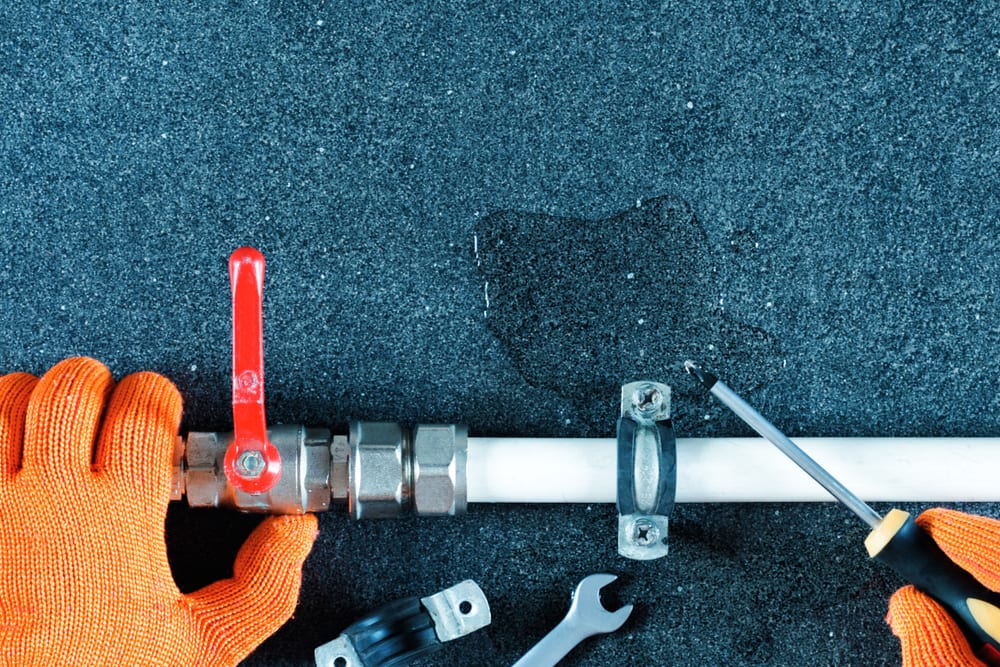What are your opinions about Locating water leaks?

Early discovery of leaking water lines can reduce a potential disaster. Some tiny water leakages may not be noticeable.
1. Analyze the Water Meter
Examining it is a surefire method that assists you find leaks. If it relocates, that suggests a fast-moving leak. This implies you might have a slow-moving leak that could also be underground.
2. Check Water Usage
Evaluate your water expenses and also track your water usage. As the one paying it, you ought to see if there are any type of disparities. If you identify sudden changes, in spite of your usage being the same, it implies that you have leaks in your plumbing system. Remember, your water bill ought to drop under the very same array every month. An unexpected spike in your bill shows a fast-moving leak.
A stable boost every month, also with the same habits, reveals you have a slow leakage that's also gradually rising. Call a plumber to thoroughly examine your residential or commercial property, especially if you feel a warm area on your floor with piping beneath.
3. Do a Food Coloring Examination
When it pertains to water consumption, 30% comes from commodes. Test to see if they are running appropriately. Drop flecks of food shade in the tank as well as wait 10 mins. There's a leak between the tank and dish if the color in some way infiltrates your dish during that time without flushing.
4. Asses Exterior Lines
Do not fail to remember to examine your outside water lines as well. Examination spigots by connecting a garden hose. Should water permeate out of the connection, you have a loose rubber gasket. Replace this as well as make sure all links are limited. If you have actually got a lawn sprinkler, it will certainly assist get it professionally checked out and also preserved each year. One little leakage can waste tons of water and also surge your water bill.
5. Evaluate and Analyze the Circumstance
Home owners should make it a behavior to inspect under the sink counters and also inside closets for any type of bad odor or mold and mildew development. These 2 warnings indicate a leak so punctual attention is needed. Doing routine assessments, even bi-annually, can save you from a major issue.
If you understand your residence is already old, keep a careful eye on your heating systems, hose pipes, pipelines etc. Check for stainings and also deteriorating as most appliances and pipelines have a life expectancy. They will additionally naturally weaken due to wear and tear. Don't wait for it to intensify if you think dripping water lines in your plumbing system. Call a professional plumber immediately so you don't wind up with a horrible mess in your house.
Early discovery of dripping water lines can minimize a potential disaster. Some small water leakages may not be noticeable. Checking it is a proven method that aids you uncover leakages. One tiny leakage can lose bunches of water and surge your water expense.
If you suspect dripping water lines in your plumbing system, don't wait for it to intensify.
WARNING SIGNS OF WATER LEAKAGE BEHIND THE WALL
PERSISTENT MUSTY ODORS
As water slowly drips from a leaky pipe inside the wall, flooring and sheetrock stay damp and develop an odor similar to wet cardboard. It generates a musty smell that can help you find hidden leaks.
MOLD IN UNUSUAL AREAS
Mold usually grows in wet areas like kitchens, baths and laundry rooms. If you spot the stuff on walls or baseboards in other rooms of the house, it’s a good indicator of undetected water leaks.
STAINS THAT GROW
When mold thrives around a leaky pipe, it sometimes takes hold on the inside surface of the affected wall. A growing stain on otherwise clean sheetrock is often your sign of a hidden plumbing problem.
PEELING OR BUBBLING WALLPAPER / PAINT
This clue is easy to miss in rooms that don’t get much use. When you see wallpaper separating along seams or paint bubbling or flaking off the wall, blame sheetrock that stays wet because of an undetected leak.
BUCKLED CEILINGS AND STAINED FLOORS
If ceilings or floors in bathrooms, kitchens or laundry areas develop structural problems, don’t rule out constant damp inside the walls. Wet sheetrock can affect adjacent framing, flooring and ceilings.
https://www.servicemasterbyzaba.com/blog/how-to-detect-water-leakage-in-walls/

I found that article about Locating water leaks while doing research the internet. I beg you take the time to distribute this post if you enjoyed reading it. Thanks a lot for your time spent reading it.